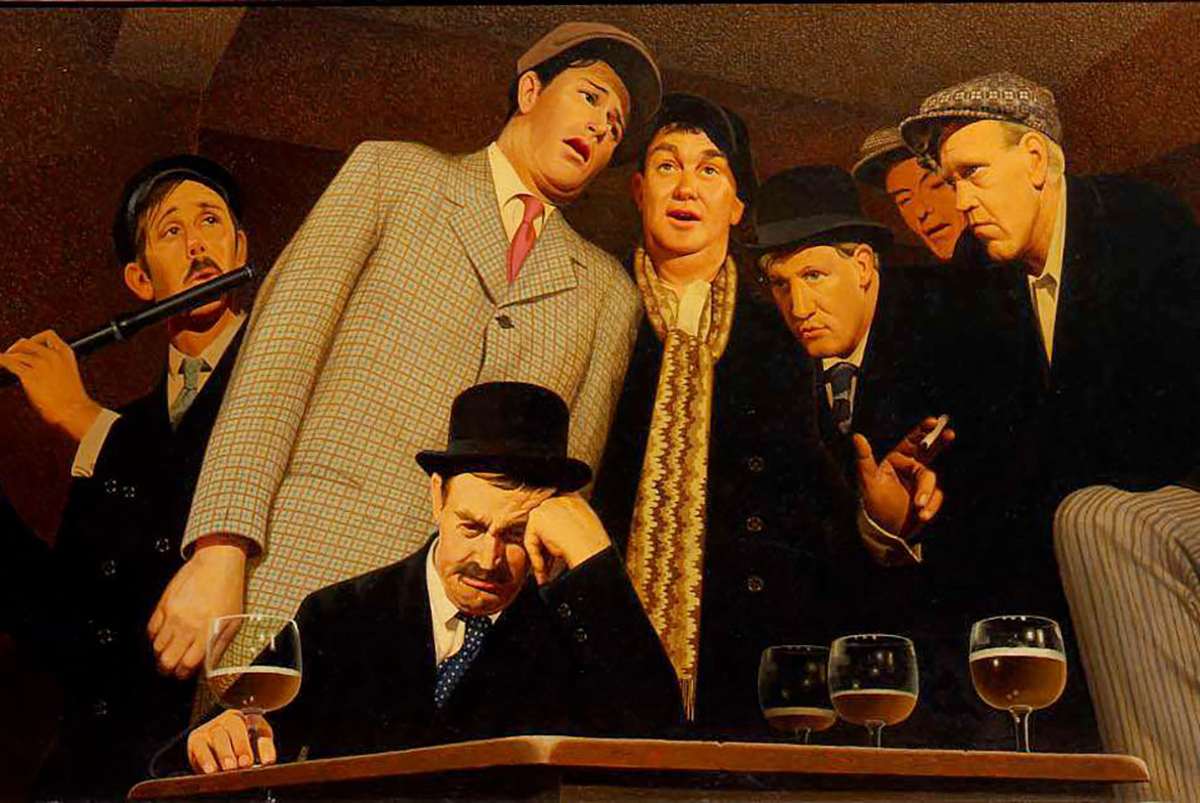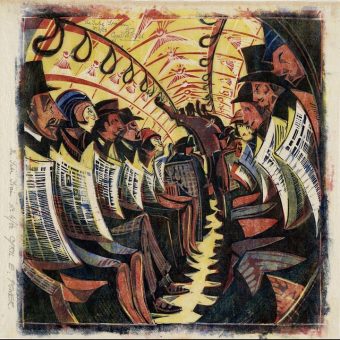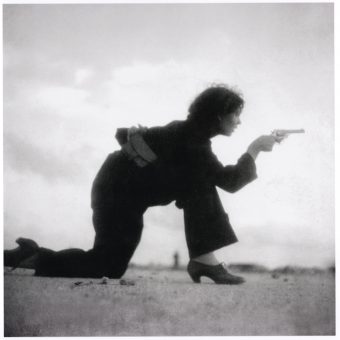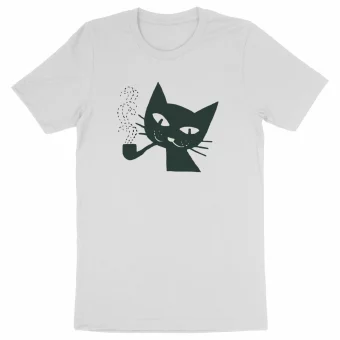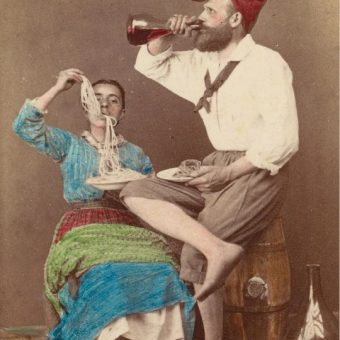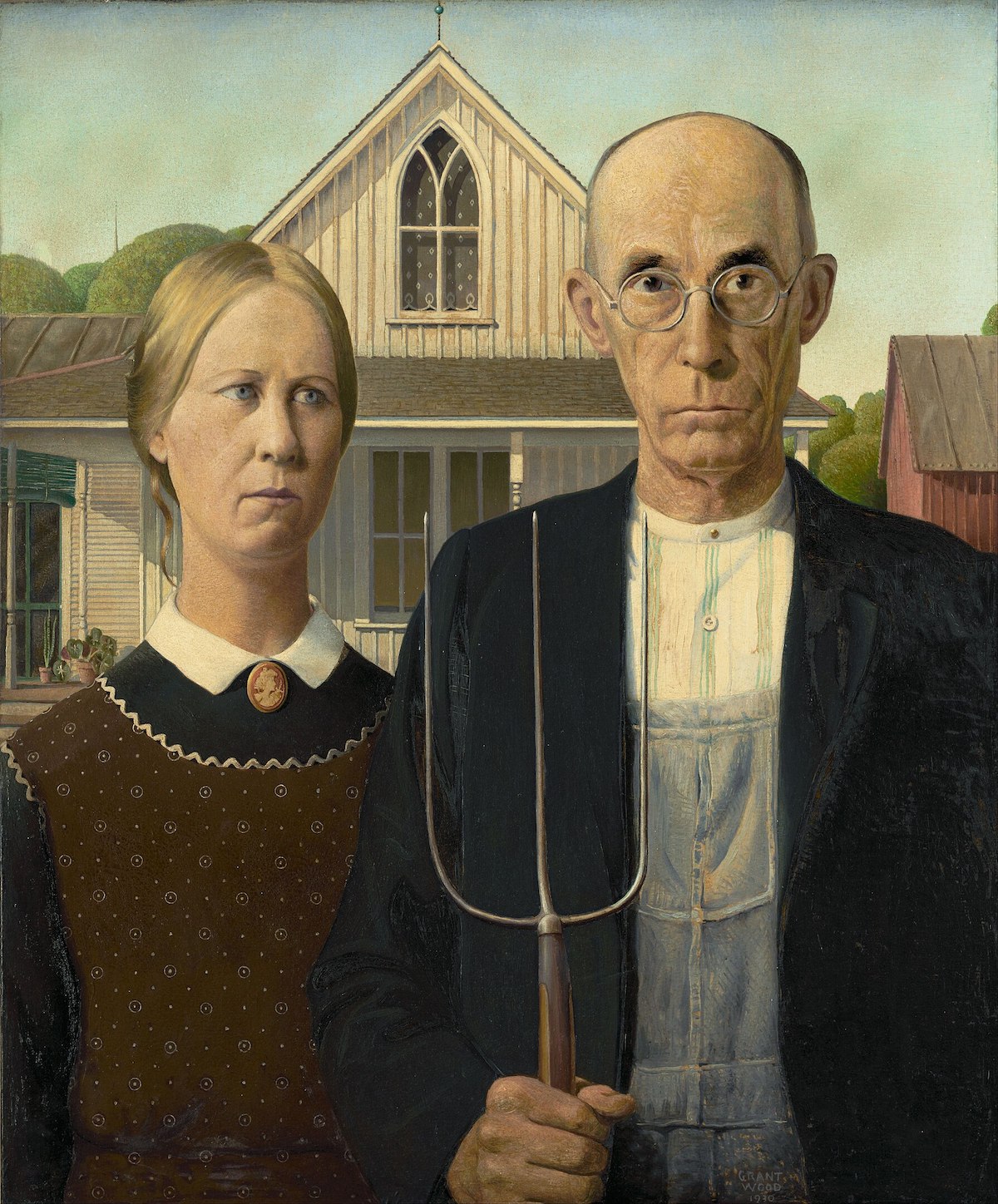
Grant Wood’s most famous picture is American Gothic (1930), that painting stepped in storytelling and subversive wit of two farmers looking lean, staid and weather-beaten as they stand guard before their lean and staid home. But there’s lot more to him that than hit. Wood was a versatile artist who made arts and crafts decorative objects and impressionist oils.
A much overlooked highlight from his other work is Shiners’ Quartet, one of the artist’s precise yet dreamy and sensual lithographs. (Established in New York City in 1870, The Shriners, an offshoot of Freemasons, whose members wear red fezzes and participating in civic parades driving small, motor vehicles.)
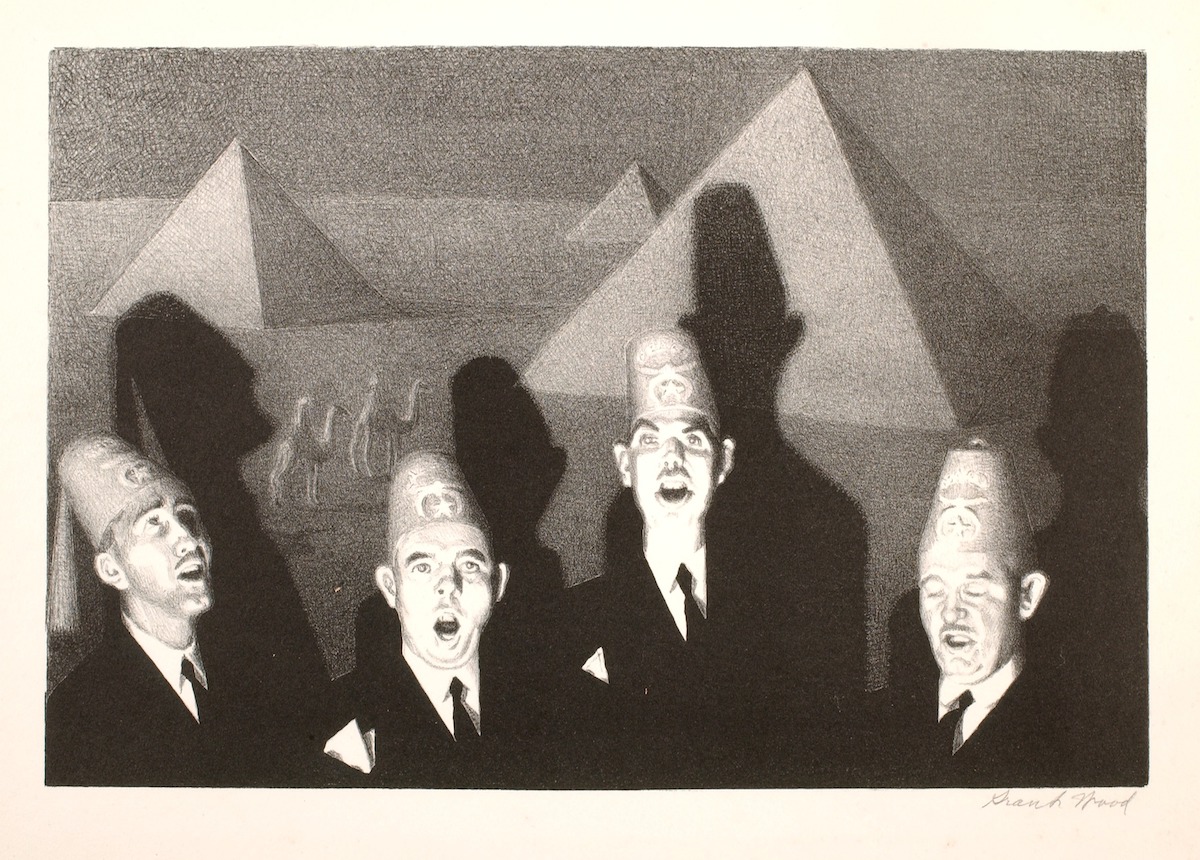
Grant Wood: Shriners’ Quartet
Grant Wood (February 13, 1891 – February 12, 1942) was born in rural Iowa. A decade later, following the death of his father, he and his family moved to Cedar Rapids. He worked at a metal shop, and studied arts and crafts at The Handicraft Guild (1904 to 1918), an art school run almost entirely by women in Minneapolis in 1910, and from 1913 to 1916 at the School of the Art Institute of Chicago.
After a stint in the army, working as an artist designing camouflage scenes as well as other art at the end of World War 1, he became a public school art teacher back in Cedar Rapids.
In the 1920s, while working as a teacher, Wood made several trips to Europe, including a year studying at French painter and teacher Rodolphe Julian’s (1839–1907) Académie Julian in Paris. Having seen many impressionistic works up close, Wood’s artistic outlook expanded in 1928 on a trip to Munich to see the norther Renaissance artists, like Hans Memling (c. 1430 – 11 August 1494) and Rogier van der Weyden (1399 or 1400 – 18 June 1464).
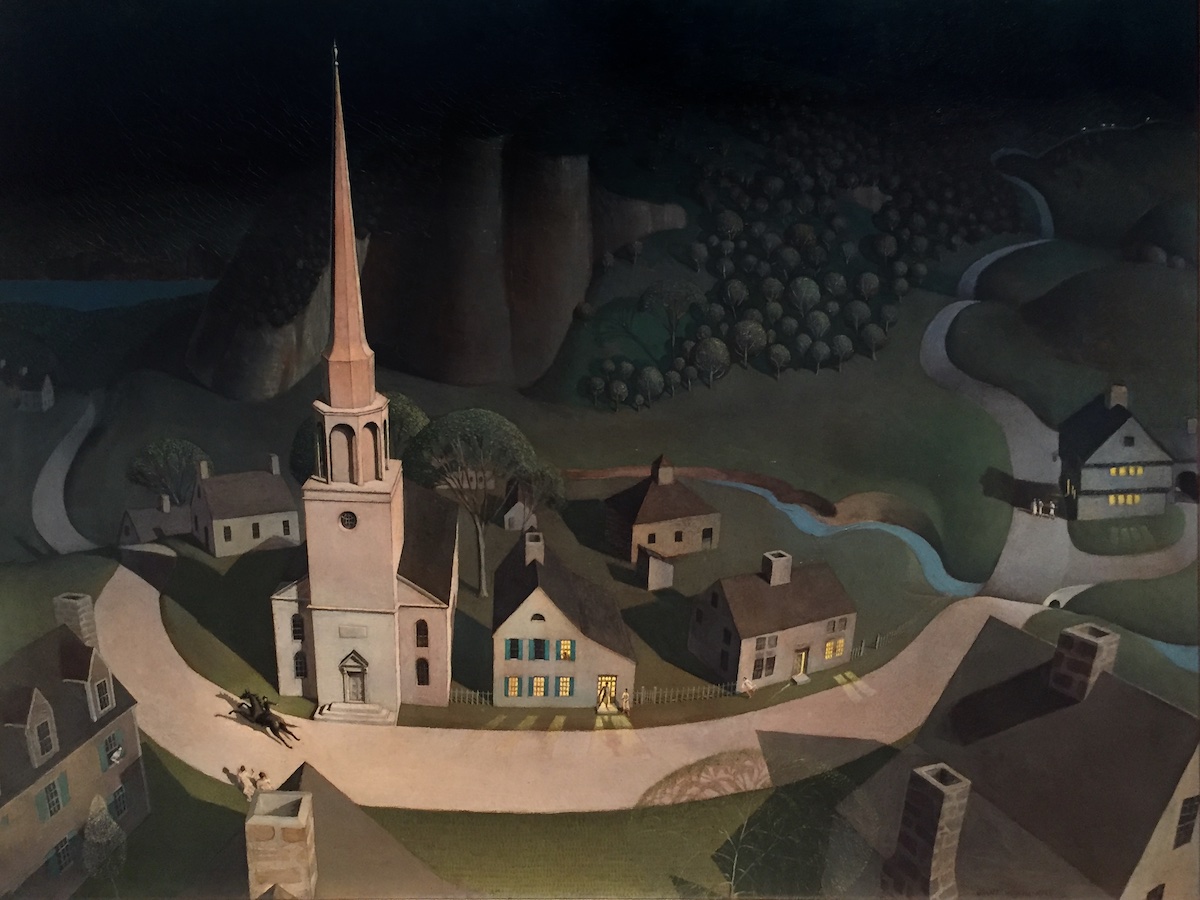
Midnight Ride of PaulRevere by Grant Wood, 1931
So before he got his look of stylised and humorous scenes, Wood was influenced by the technique and themes of many different influences. As the Culture Critic notes on X:
In the end Wood remains an elusive artist, one whose exact meaning always feels just out of reach. His paintings are both charming and artificial, a delicate evocation of rural life and an ethereal, dream-like vision of it, for some beautiful and for others slightly disturbing.
It’s important to point out that Wood wasn’t totally unique. His work, alongside that of the painters John Steuart Curry and Thomas Hart Benton, was given the broad name of “Midwestern Regionalism”.
You can see some general stylistic similarities. But Wood stands apart from the other two great Midwestern Regionalists, who were influenced more by Baroque and Cubism than Wood’s favoured Netherlandish art.
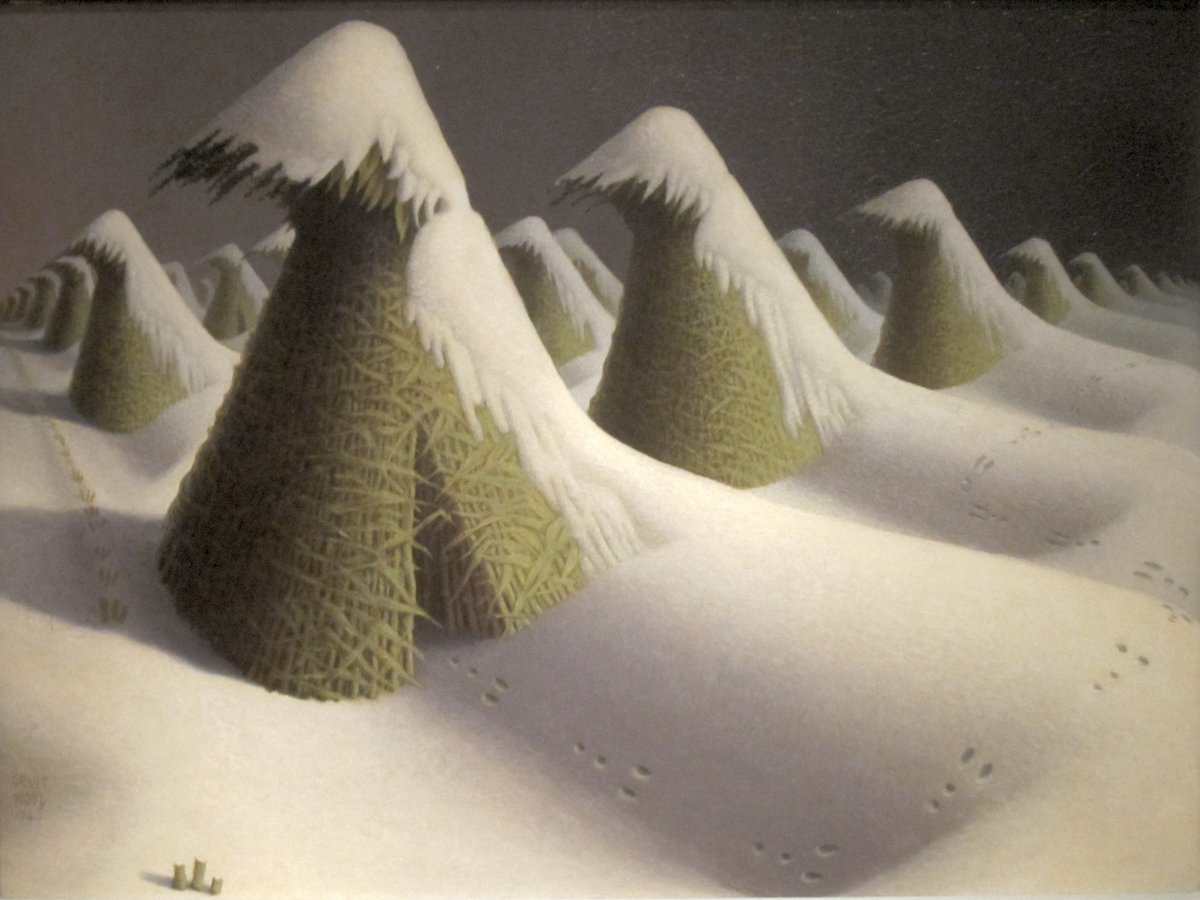
January, 1940–41, by Grant Wood
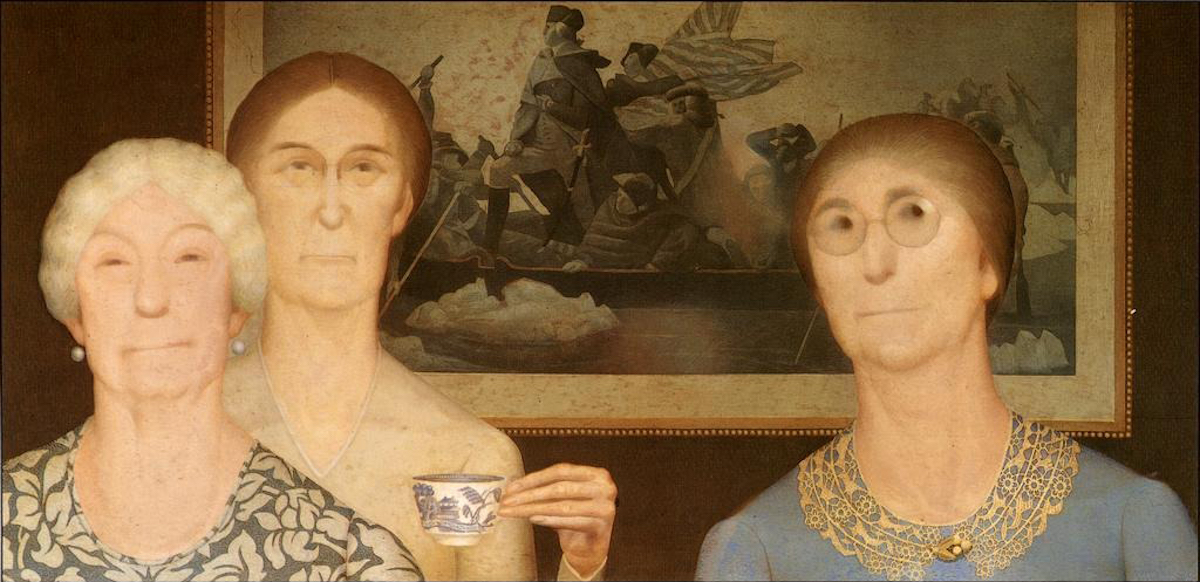
Daughters of Revolution, 1932, Cincinnati Art Museum
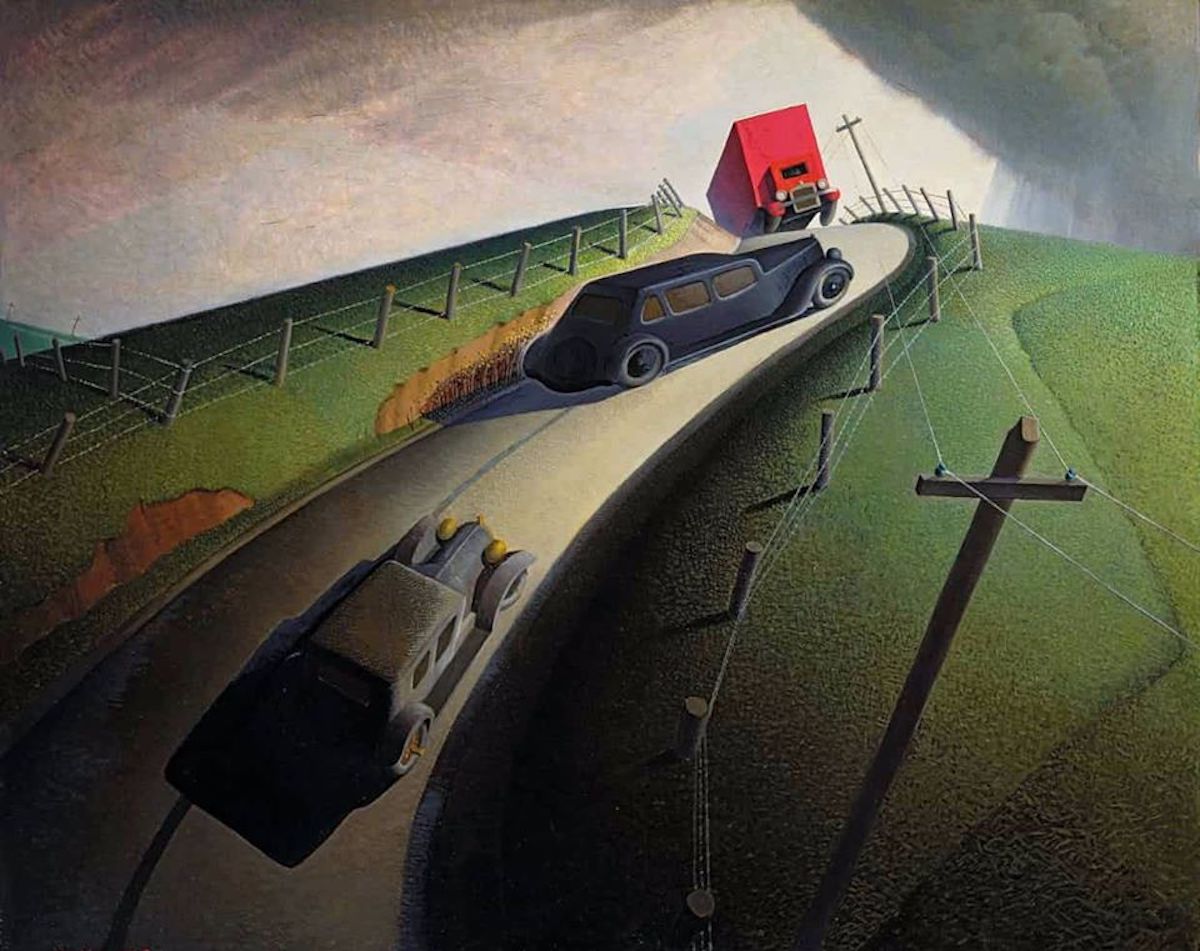
Grant Wood, Death on the Ridge Road, 1935
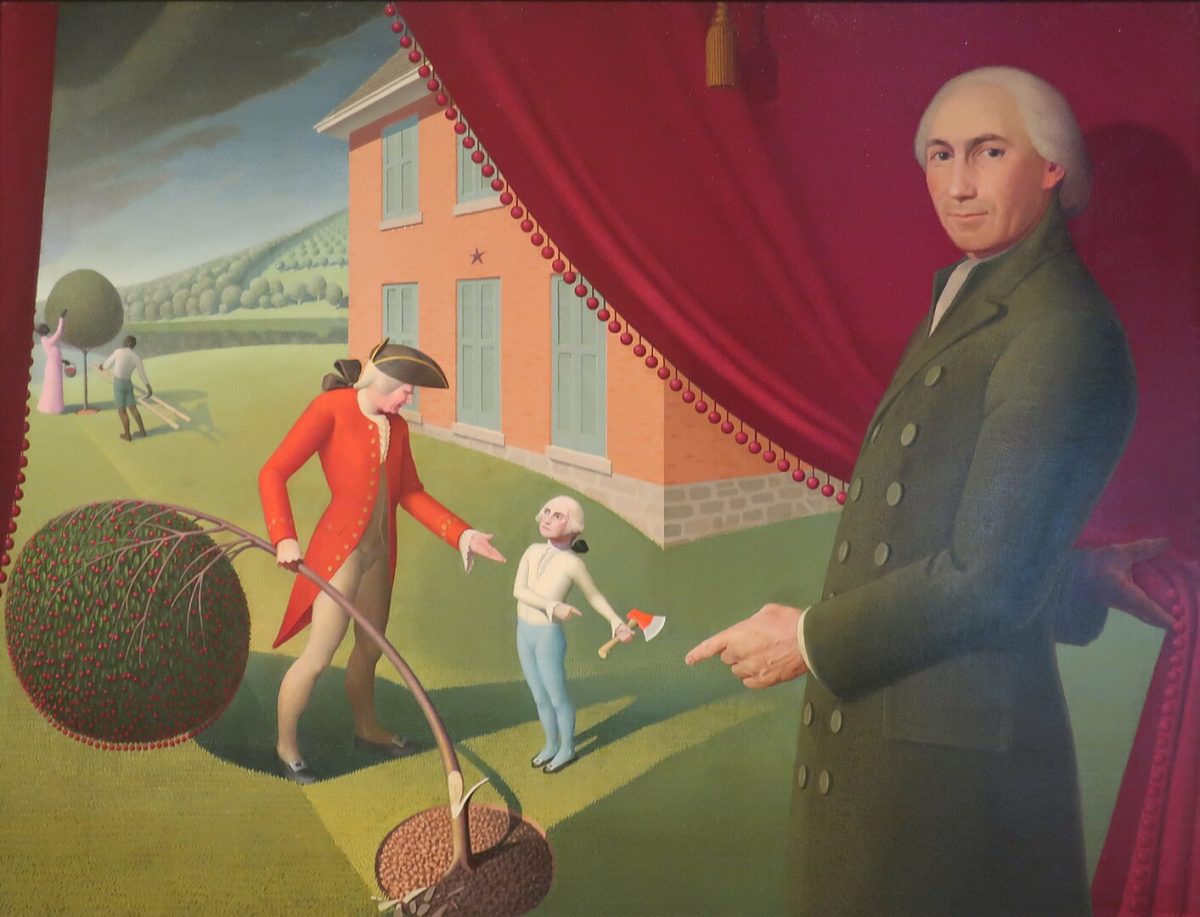
Parson Weems’ Fable, 1939, Amon Carter Museum, 1939
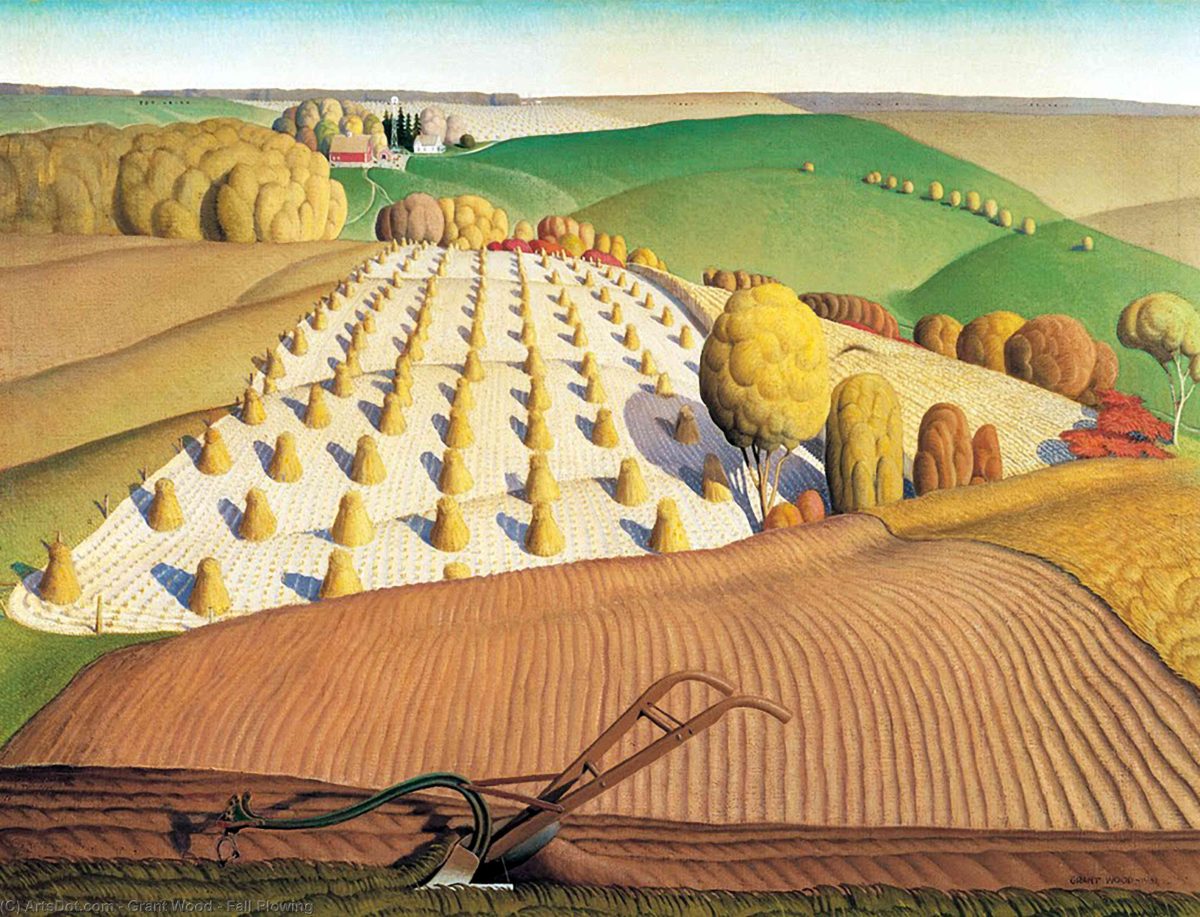
Fall Plowing, Grant Wood, 1931
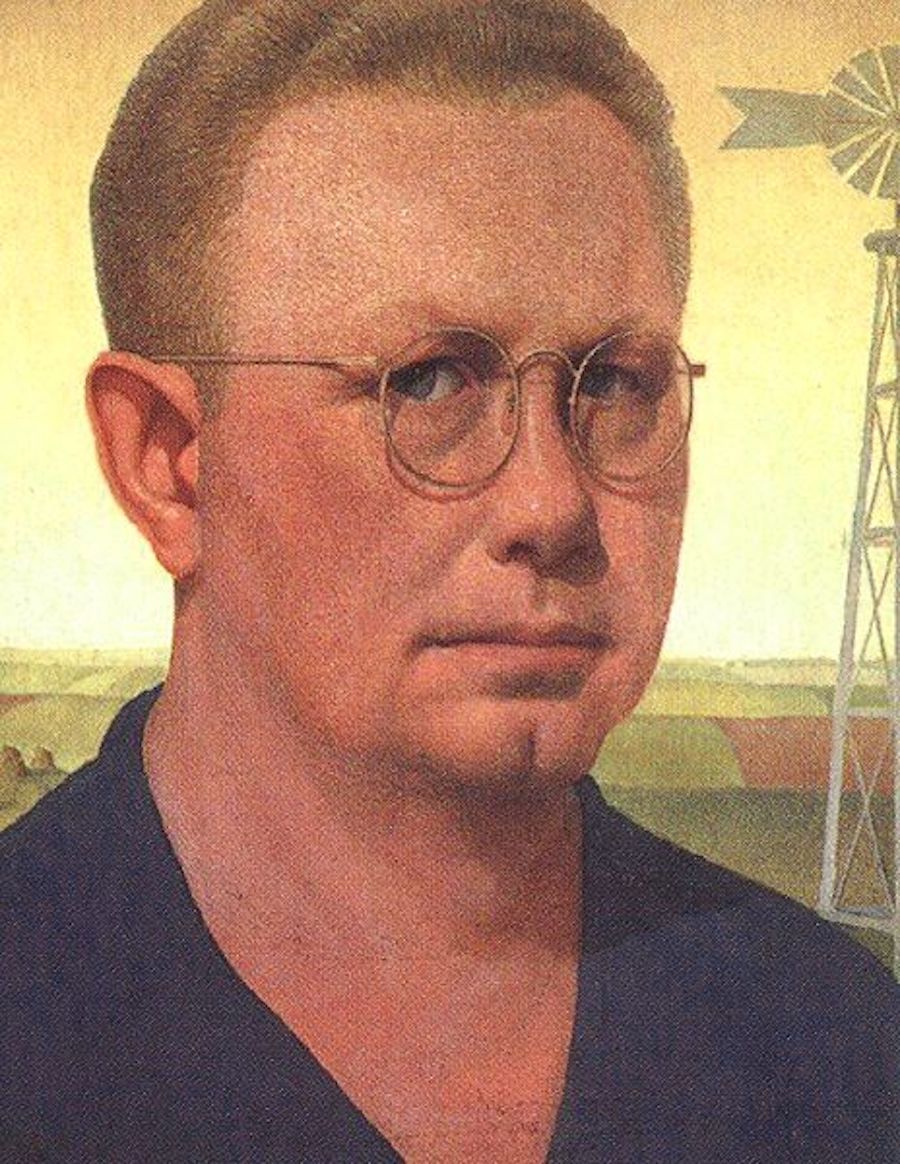
Self-portrait Grant Wood, 1925
Buy Grant Wood prints in the shop.
Would you like to support Flashbak?
Please consider making a donation to our site. We don't want to rely on ads to bring you the best of visual culture. You can also support us by signing up to our Mailing List. And you can also follow us on Facebook, Instagram and Twitter. For great art and culture delivered to your door, visit our shop.

